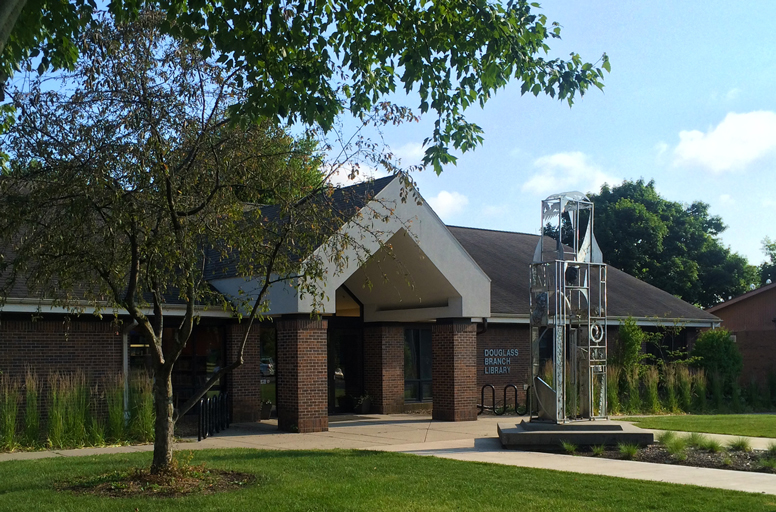Champaign Public Library Douglass Branch
504 E. Grove St., Champaign
The Douglass Center Library was organized in 1970 to serve both Urbana and Champaign, a joint project of the two cities’ libraries, Lincoln Trail Libraries System, and the Champaign Park District. The Library was named for Frederick Douglass, the American abolitionist and journalist who escaped from slavery and became an influential lecturer — including at least one stop in Champaign.
For five years, the Douglass Center Library occupied a room in the Douglass Community Center at 801 N. Sixth St. In 1972, the library began to operate as a branch of the Champaign Public Library. In 1975, Urbana discontinued its involvement in the project for financial reasons. The following year, the Branch was moved to a small building at 310 E. Bradley Avenue.
The existing 6,074-square-foot Douglass Branch Library opened in June 1997 with space for 10,000 items. The building was designed by Olsen + Associates and constructed at the south end of Douglass Park at 504 E. Grove Street. The facility was jointly funded by the Library, the City of Champaign, the Illinois State Library, the Champaign Park District, and the Champaign Public Library Foundation.
Frederick Douglass: In Remembrance, a work of art by Preston Jackson that stands near the entrance to the Douglass Branch, was commissioned by the Champaign Public Library Foundation and dedicated August 14, 1999. It was funded by gifts from the Friends of the Champaign Public Library, area business, and donors from the community, and in part by a Live and Learn Construction Grant from the Illinois State Library, a division of the Office of the Secretary of State.
Text and Image Credits:
Champaign Public Library Douglass Branch. “History.” https://champaign.org/about/history
Champaign Public Library: https://champaign.org/
Decade:
1970-1979
People:
- Frederick Douglass
Location(s):
- Champaign, Illinois
Additional Champaign Trail Sites

